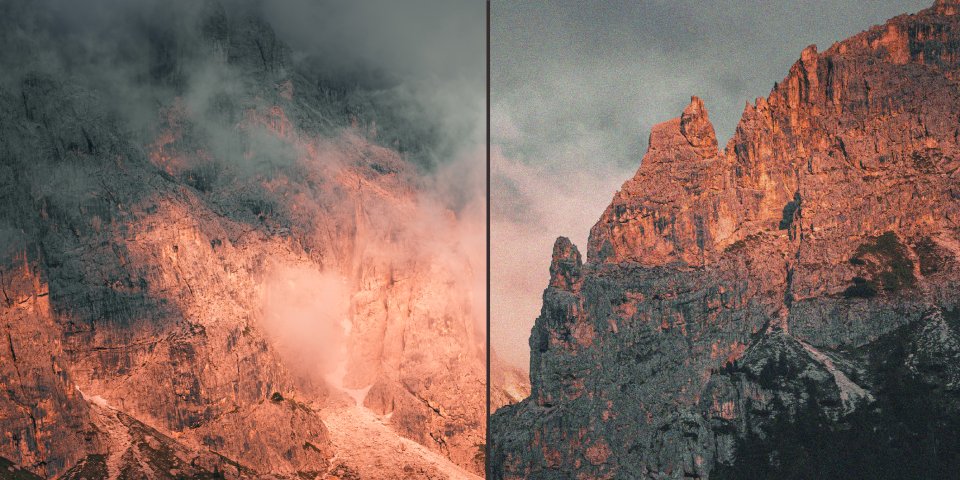
Understanding ISO in Photography: When High ISO is a Good Idea
 Vlad Manea
Vlad Manea
You’ve probably been told at some point that you should always shoot at the lowest ISO possible—often ISO 100 on many cameras (not including extended ISO ranges). While that advice has merit in certain situations, it can also be misleading and sometimes even the worst advice. Here’s why.
What is ISO, Really?
ISO is like a volume knob for your camera’s sensor. It allows you to brighten or darken your image by increasing or decreasing the signal-to-noise ratio. If your image is too bright, lowering the ISO will help; if it’s too dark, increasing the ISO can bring more light into the shot.
But where does noise come from, and how does it appear?
Contrary to popular belief, noise doesn’t just result from cranking up the ISO. It becomes more noticeable when there’s a lack of light in the scene. The idea of exposing for highlights (ensuring the brightest parts of your image don’t blow out) is generally good, but if you underexpose your photo too much, noise will creep in.
When Low ISO Works Best
Shooting at a low ISO, like ISO 100, is great when there’s plenty of light or when your camera is static. This is why landscape, architecture, or product photographers often use ISO 100. The camera sits on a tripod, and there’s no movement—so no need for a fast shutter speed. In these scenarios, keeping the ISO low ensures a clean, noise-free image. Usually the dynamic range has a higher value at a lower ISO.
For example, when shooting waterfalls or long exposures at night, you can use a slow shutter speed to capture movement, and the camera remains steady on a tripod. Similarly, for flash photography, you can often stick to ISO 100 because the flash provides all the light you need.
Why You Should Embrace Higher ISO
However, using a low ISO isn’t practical for every situation. When you’re shooting handheld or capturing subjects in motion, a higher ISO can be mandatory. This is particularly true in scenarios with less light, like concerts or events held indoors or in the evening.
Let’s take concerts as an example. You often need a fast shutter speed to freeze motion, but the lighting is far from ideal—think stage lights, lasers, and dark backgrounds. Shooting at ISO 800, 1600, or even higher is common, and modern cameras are much better at handling higher ISOs than they used to be. You may have heard that anything above ISO 800 is unusable due to noise, but that’s not the case with today’s technology. Full-frame cameras, in particular, can handle higher ISOs while keeping noise at a manageable level. Even crop-sensor cameras perform well up to ISO 1600 or higher.
Handheld Shooting and ISO
When shooting handheld without stabilization, you need a higher shutter speed to avoid blurry photos caused by camera shake. Typically, you’ll want to shoot at 1/60 of a second or faster, depending on your lens’s focal length. To achieve that without underexposing your image, you’ll need to increase your ISO.
Trust me, it’s much easier to reduce noise in post-production than it is to fix a blurry, unfocused shot. Once you start experimenting with higher ISOs and expose your photos properly, you’ll see that shooting above ISO 100 isn’t as scary as you might have thought.
Tips for Managing Noise at Higher ISOs
Avoid Over-Cropping: When you crop into an image taken at a high ISO, the noise will become more noticeable. The best approach is to compose your shot properly while shooting, so you don’t have to crop in too much later.
Use Noise Reduction Software: Tools like Lightroom’s Denoise feature can clean up grainy images without losing much detail, particularly in the background while preserving the sharpness of your subject.
Don’t Always Expose for Highlights: When you expose for the highlights and underexpose your image too much, you’ll end up raising the exposure in post-processing, which will make the noise more prominent. Some cameras, like the Sony A7III, have ISO-invariant sensors, which means they handle noise better when the exposure is adjusted in post. However, this isn’t true for all cameras, so it’s essential to find the right balance when exposing your shot.